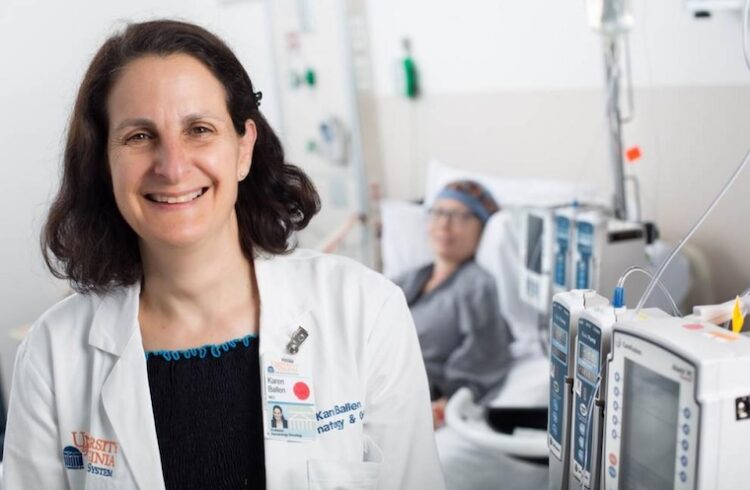
The University of Virginia Health System is among the top three percent of U.S. hospitals in achieving one of the most important clinical performance metrics recommended by the American College of Cardiology (ACC) and American Heart Association (AHA).
The metric tracks how well hospitals perform in providing primary percutaneous coronary intervention (PCI) – a procedure that opens up blocked arteries with a balloon – within 90 minutes to patients suffering an acute type of heart attack known as ST-segment elevation myocardial infarction (STEMI). The metric is one of six spotlighted in the latest update of the ACC/AHA clinical performance measures, published online November 10 in the Journal of the American College of Cardiology and in Circulation .
According to Dr. Michael Ragosta, an interventional cardiologist, 95 percent of the STEMI patients arriving at UVA during the most recent fiscal year received PCI within 90-minutes of their arrival, an achievement that places the medical center in the 97 th percentile of all U.S. hospitals.
“Many people may have heard this metric referred to as door-to-balloon time,” explains Ragosta. “We consider this to be one of the most important of all the AHA/ACC performance measures for two reasons. It reflects the quality of an institution’s entire system for managing heart attacks. Also, treating a heart attack within this timeframe makes a huge difference in our ability to save lives and preserve heart muscle.”
The updated ACC/AHA clinical performance measures also cover drug therapy, referrals to cardiac rehabilitation programs, evaluation of a patient’s left ventricular systolic function during hospitalization and several other metrics specifically for doctors and hospitals. According to Ragosta, UVA is performing very well on all current performance measures and will quickly embrace the revisions announced this month.
In a notable change, the AHA/ACC metrics will now track treatment times for STEMI patients who are transferred from a hospital that does not perform PCI to one that does. Previously, there was no requirement to record door-to-balloon times for transferees due to difficulty in determining when patients arrived at the first hospital and when they received PCI at the second. Going forward, hospitals will be required to report door-to-balloon times for transferees.
This change will impact performance tracking at UVA, says Ragosta, because the majority of its STEMI patients are transferred from other hospitals. Most come from Culpeper Regional Hospital in Culpeper and Augusta Medical Center in Fishersville. Some arrive from as far away as Bath, Page and Danville Counties. Transferees accounted for 64 percent of UVA’s STEMI patients in 2006, 69 percent in 2007 and 57 percent so far this year.
The total number of STEMI patients treated at UVA was 171 in 2006, 151 in 2007 and 137 to date in 2008.
Ragosta says that UVA has a strong institutional commitment to the ACC/AHA metrics. “We’re committed to delivering top quality care to all of our patients though a systems-based approach,” he notes. “I believe our door-to-balloon times should assure patients that they will receive an extraordinary level of care here.”
Related links:
ACC/AHA 2008 Performance Measures for Adults With ST-Elevation and Non-ST-Elevation Myocardial Infarction: http://tinyurl.com/6fvux9


